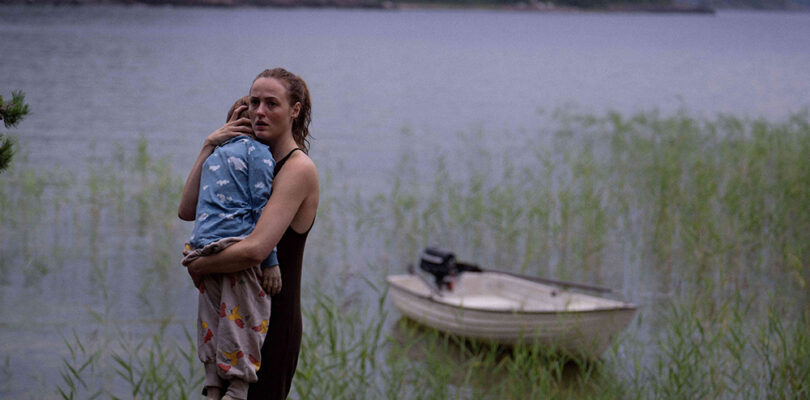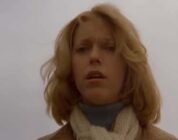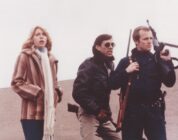If zombies weren’t so fixated on eating our brains, perhaps they’d be poignant to have around: semi-living, semi-breathing semblances of people we’ve loved, there to be seen and held and talked to, not truly present but not absent either. Whether that’s preferable to the void of death is the question underpinning “Handling the Undead” for much of its running time, even as the threat of the undead reverting to their usual habits gives this soft, sorrowful bereavement drama a core of cold-blooded horror. Thea Hvistendahl‘s impressively restrained debut feature may keep its genre intentions just up its sleeve until the final act, but it never feels like a trick or a compromise: It’s a living-dead nightmare with a brain and a heart and, most importantly and inedibly, a soul.
The film’s somewhat liminal genre identity presents marketing challenges for U.S. distributor Neon following its premiere in Sundance’s World Dramatic competition: More disquieting than scary, and certainly not bloody enough for the midnight-movie crowd, its horror trappings might still deter arthouse viewers drawn by the prospect of a reunion between “The Worst Person in the World” stars Renate Reinsve and Anders Danielsen Lie. (It isn’t one, as such: Their strands never intersect in a loosely knit ensemble piece.) These contradictions are features, not bugs: Full of frail, mortal feeling and overcast last-days imagery, “Handling the Undead” lingers coolly in the bones longer than many zombie films that offer more immediate, grisly gratification.
A clue to the tone here is that “Handling the Undead” is based on a novel by “Let the Right One In” author John Ajvide Lindqvist, sparsely adapted by Hvistendahl and the author himself. It’s suffused with much the same melancholic dread that colored that elegant 2008 vampire hit, but a much more elliptical approach to narrative. A mostly dialogue-free opening salvo introduces a scattered selection of Oslo residents, connected by little but a common air of devastation, over the course of a muggy’s summer day. The weight of humidity is felt in the generally stifling ambience, though there’s little seasonal brightness in Pål Ulvik Rokseth’s exquisite lensing, all wilted khaki tones and heavy gray light.
Stricken-looking seventysomething Mahler (Bjørn Sundquist) smokes a cigarette with gnarled, shaking hands, eventually returning home to a drab high-rise flat where his adult daughter Anna (Reinsve) avoids his gaze: Gradually we surmise that she has recently lost her young son Elias, and has lost the will to live herself. At an echoey funeral home, elderly Tora (Bente Børsum) sits stiffly through an otherwise unattended funeral for her life partner Elisabet (Olga Damani), before the coffin is wheeled away on an industrial trolley. There’s more life and noise in the household of aspiring standup David (Danielsen Lie), his girlfriend Eva (Bahar Pars) and their adolescent children, though not for long. A car accident that evening leaves Eva on life support — before an uncanny aura settles over the city, signaled by flickering power cuts, swarming birds and an apocalyptic chorus of car alarms, leaving the divide between life and death suddenly more permeable.
Doctors are perplexed when Eva’s heart starts robustly beating again, even if there are no vital signs behind the eyes. Mahler exhumes his grandson’s small corpse, its flesh rotting and yellowed, but suddenly breathing in short, halting gasps. And Tora is stunned to find Elisabet back in their home, not vocally or emotionally responsive, but willing to sit and have her hair brushed, or to be caressed in the bed they once more warmly shared. No one is especially eager to question or investigate this strange return, lest the miracle — partial and imperfect as it is — be just as quickly reversed. But there’s only so much you can do with such passive, in-between creatures: An overriding sense of grief endures even as these spiritless bodies are fed and nurtured toward some imitation of life.
Hvistendahl treats all these domestic vignettes with an equal sense of everyday pathos, regardless of their morbidly fantastical circumstances — though a pained montage of unreturned acts of love, scored to Nina Simone’s tremulous interpretation of Jacques Brel’s “Ne Me Quitte Pas,” is a rare lapse into emotional overstatement. The impasse between presence and absence depicted here is upsetting enough that it’s almost a relief when these tenderly coddled zombies begin showing their teeth: A hostile reaction is better than none at all, as a many a relationship counselor might advise.
The actors commit with uniform solemnity and intelligence to the premise, though “Handling the Undead” treats its performances as merely another contributing element to its tensely poised climate of kitchen-sink surrealism. Equally active in its maintenance are the watchful, stalking presence of Rokseth’s camera, the dusty carpeting and lived-in decay of Linda Janson’s production design and, most gnawingly of all, the shrilly anguished strings and discordant piano of Peter Raeburn’s excellent score. In her first fully-fledged feature after an eye-catching series of shorts and music videos, Hvistendahl cultivates baleful atmosphere with aplomb, but the film’s beautiful sorrow shifts and shivers with subtle changes in human (and not-quite-human) mood. Even zombies, it seems, have better days and worse ones.




